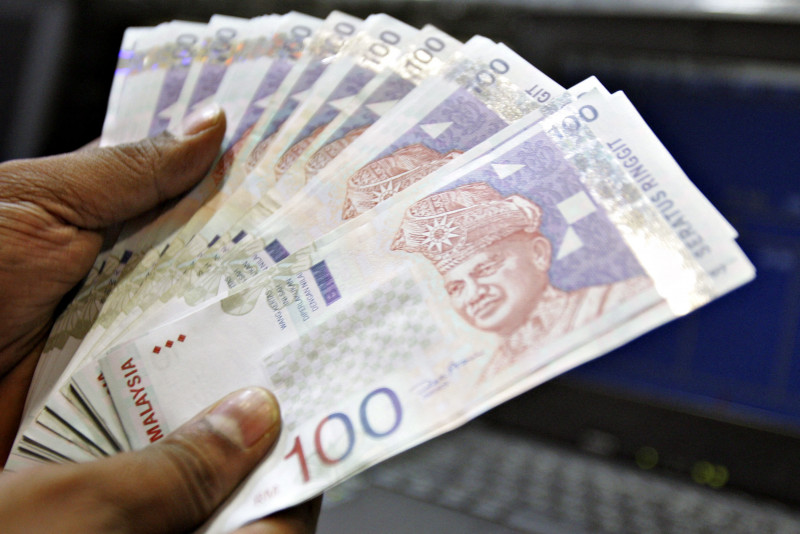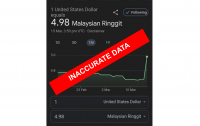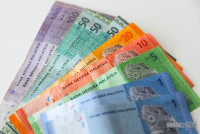GEORGE TOWN – Forget about better wages for the local workforce – the continuous depreciation of the Malaysian ringgit has also affected the purchasing power of consumers in real and nominal terms, said a Johor DAP leader.
Dr Boo Cheng Hau, an outspoken committee member of Johor DAP, blamed this shortfall on the sluggish transformation of Malaysia’s industrial sector from one which is labour-intensive that depends heavily on cheaper, lesser-skilled foreign workforce to a more technology-intensive one and an automated industry 4.0.
“The stagnant economic modelling and a failing education system have also contributed to increasing capital outflows and driving local skilled workers overseas,” said Boo.
Providing figures, Boo said in a statement that Malaysia had a net capital outflow of RM2.263 billion in the 4th quarter of 2021, according to the Department of Statistics.
Between 2019 and 2021, except in the 1st and 3rd quarters of 2021, Malaysia recorded net capital inflows of RM15.797 billion and RM22.686 billion respectively.
The country’s total capital outflows in all other quarters amounted to RM123.097 billion, and a net total capital outflow of RM84.614 billion in the past three years.
The persistent capital outflows showed both domestic and foreign investors’ diminishing confidence in the present regime of managing the country’s economy, he added.
As a temporary monetary measure, the Monetary Policy Committee of Bank Negara Malaysia decided to increase the Overnight Policy Rate (OPR) by 25 basis points to 2.00%.
The ceiling and floor rates of the corridor of the OPR are correspondingly increased to 2.25% and 1.75%, respectively.
These monetary measures are only temporary to absorb the shock faced by the depreciation of the ringgit and in an attempt to contain inflation while maintaining its exchange rate flexibility.
This comes in the midst of the US dollar appreciation after the US Federal Reserve announced its biggest interest rate increase by half a percentage point, to a range of 0.75% to 1% in more than two decades as it toughens its fight against fast rising inflation.

Nonetheless, there are also many other detrimental long-term factors that have resulted in a weaker Malaysian ringgit.
Boo called on authorities to reform financial fundamentals, revamp infrastructures, overhaul outdated race-dominant socio-economic and education policies, combat corruption and illicit capital outflows.
“The shortcomings in the economy have affected our purchasing power, quality of life, and more and more young talents are leaving the country for greener pastures elsewhere due to lowering purchasing power of our own currency,” he said.
In the past 10 years, the Malaysian ringgit has depreciated against major regional currencies, not only the Singaporean dollar by -22% but also -21% against Thai baht, -13% Philippine peso, -22% Vietnam dong, -29% Cambodia riel, -24% renminbi, -28% Taiwanese New Dollar, -29% Hong Kong dollar, -21% South Korean won, -29% US dollar, -13% euro, -7.9% sterling pounds, and -25% Swiss franc.
For Malaysia to improve investors’ confidence, the institutional weaknesses have to be corrected, Boo said.
According to a report by Global Financial Integrity, developing countries with the largest value gaps identified in trade with 36 advanced economies in 2018 are China (US$305.0 billion), Poland (US$62.3 billion), India (US$38.9 billion), Russia (US$32.6 billion) and Malaysia (US$30.7 billion).
Malaysia lost between US$22.9 billion (RM94.22 billion) and US$33.7 billion (RM138.66 billion) in illicit capital outflows from 2006 until 2015.
Malaysia lost up to about US$431 billion (RM1.8 trillion) in an illegal flow of money between 2005 and 2014.
“We possibly have the highest illicit capital outflows per capita in the world, leading to massive amounts of government revenue losses due to tax evasion that could have been used to promote our education system,” Boo said. – The Vibes, May 14, 2022



















.jpg)

